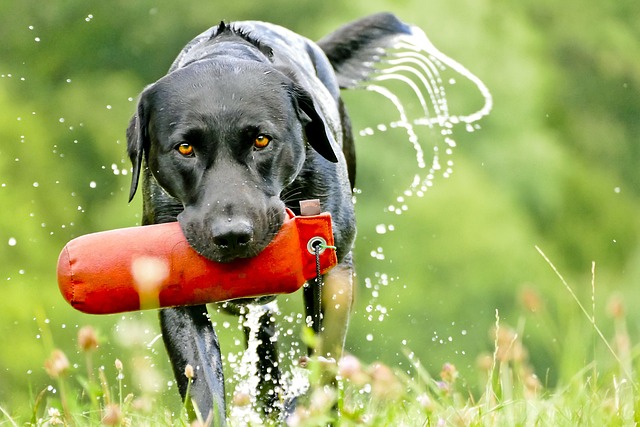
How long does it take to train a dog 1 command?
Dreaming of the moment your dog sits on command or stays put while you answer the door? Training your furry pal is like building a secret language, but one question lingers: how long will it take?
Picture this: You’re at the local park, leash in hand, and your dog catches sight of a squirrel. In a split second, your voice—calm, clear, confident—says “Stay.” Your dog pauses, looks back at you, and the squirrel sprints away, crisis averted. That tiny moment? It’s not just about control. It’s about trust, safety, and an invisible thread tying you and your dog together. Mastering the seven most important dog commands isn’t just about obedience; it’s about building a psychological partnership. Essential dog commands for training are the foundation for a relationship where your dog feels secure, understood, and part of your world.
Training your dog goes way beyond teaching them to sit or lie down. Understanding the psychological bond in dog training means recognizing that your dog isn’t a robot—they’re a thinking, feeling companion. Positive reinforcement taps into their natural desire to please and connect with you. When you use dog commands to improve behavior with consistency and kindness, you’re not just shaping actions; you’re shaping their confidence and happiness. Behavioral science shows that dogs thrive when they know what’s expected and when their efforts are met with encouragement. This approach creates a cycle of trust: you read their cues, they read yours, and together you navigate the world as a team.
So, what are the seven most important dog commands, and how do they impact your dog’s mind and your mutual bond? “Sit” is the gold standard for impulse control—think of it as your dog’s way of asking, “What’s next?” “Stay” builds patience and helps your dog manage excitement, making outings and visitors less chaotic. “Come” isn’t just a recall; it’s a lifeline, showing your dog that returning to you is always safe and rewarding. “Down” encourages relaxation and calmness, especially in stimulating environments. “Leave it” and “Drop it” are psychological dog training commands that teach self-control, helping your dog resist temptation, whether it’s food on the sidewalk or a stray sock at home. Finally, “Heel” isn’t just about walking politely; it’s about moving through the world together, step for step, as partners. These dog owner and pet bonding commands are more than tricks—they’re building blocks for a trusting relationship.
Integrating these essential dog commands for training into daily life doesn’t require marathon sessions. Use short, fun interactions—ask for a “Sit” before meals, practice “Stay” when you open the front door, and sprinkle in “Come” during playtime. Always use clear, consistent cues and reward with treats, praise, or a favorite toy. Positive reinforcement is the heart of effective training; it’s what turns a command into a shared language. Avoid punishment—never resort to yelling or physical correction. Not only is it culturally frowned upon in the U.S. and Europe, but it can damage trust and slow progress. Instead, celebrate small wins and progress, remembering that training is about mutual understanding, not dominance.
Of course, challenges will pop up. Maybe your dog gets distracted during walks, or refuses to “Come” when off-leash at the dog park. It’s easy to get frustrated, but remember, setbacks are normal. Go back to basics: increase the value of your rewards, reduce distractions, and keep sessions short and upbeat. If your dog is struggling with “Stay,” try practicing in quieter environments before adding more excitement. For stubborn “Drop it” moments, trade for a higher-value treat. Most importantly, check your own mood—dogs pick up on our frustration. Staying positive helps keep your bond strong, even when progress is slow. If you live in an apartment or a busy community, respect local guidelines—clean up after your dog, keep them leashed where required, and always be considerate of neighbors. These aren’t just rules; they’re part of being a responsible, respected member of your pet-friendly community.
Training your dog with these important dog commands isn’t just about a well-behaved pet—it’s about building a partnership rooted in understanding and respect. When you invest in psychological dog training commands and commit to positive, patient practice, you transform both your dog’s behavior and your connection. Instead of seeing commands as chores, see them as opportunities to communicate, to celebrate, and to grow together. Every session, every tiny success, is a building block in a relationship that will shape your life—and your dog’s—for years to come.

Dreaming of the moment your dog sits on command or stays put while you answer the door? Training your furry pal is like building a secret language, but one question lingers: how long will it take?

Housebreaking your furry friend isn't just about keeping your floors clean—it's a game-changer for both of you. Think about it: no more late-night dashes in the rain, no embarrassing surprises when guests visit.

Ever feel like you're speaking a different language when trying to teach your dog "sit" or discourage counter surfing? You might reward with a treat one minute, then ignore jumping the next

Taking your dog on car rides can be a blast—whether it’s a trip to the dog park, a weekend getaway, or just a quick errand. But in the Western world,

Taking your dog on car rides can be a blast—whether it’s a trip to the dog park, a weekend getaway, or just a quick errand. But in the Western world,

Taking your dog on car rides can be a blast—whether it’s a trip to the dog park, a weekend getaway, or just a quick errand. But in the Western world,